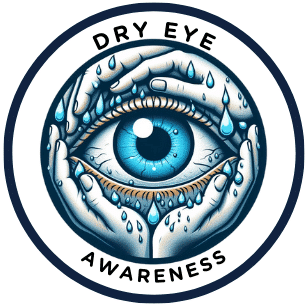
As you age, you might notice that your eyes often feel gritty or dry. This isn’t just a trivial discomfort—it’s commonly known as Dry Eye Syndrome, a condition that tends to be more prevalent among older adults. It’s characterized by a poor quality or insufficient quantity of tears. Why does this matter? Well, tears are essential for keeping the eyes healthy and ensuring clear vision.
With each passing year, the body undergoes various physiological changes, and the eyes are no exception. Aging affects the glands around the eyes, often leading to decreased tear production or tears that evaporate too quickly. These changes can significantly impact daily life, making activities such as reading or driving less comfortable, and in some cases, more challenging.
Knowing the symptoms is crucial for managing the condition effectively. If you experience a stinging, burning sensation, or if your eyes seem to fatigue easily, it could be more than just age-related tiredness. Other signs include sensitivity to light, blurred vision, or a feeling that there’s something in your eye. Discomfort when wearing contact lenses can also signify that you might have dry eye.
Why should you be proactive? Addressing dry eye early on can preserve eye health and, more importantly, the quality of life. Irritation and discomfort associated with dry eye can be more than just bothersome; they can affect aspects of daily living and your ability to enjoy activities.
The Impact of Lifestyle and Environmental Factors on Dry Eye With Aging
As our years advance, the routines and environments that once seemed harmless can subtly begin to strain our eyes. Aging brings about a natural shift in how active we are, the amount of time we spend indoors, and even the medications we take, each influencing the emergence and severity of dry eye symptoms.
Seniors often find themselves struggling with the dry, scratchy sensations that come with these lifestyle changes. Extended reading, increased screen time, and air-conditioned environments can create the perfect storm for dry eye discomfort.
Understanding the environmental triggers is crucial. Factors like low humidity, high winds, or even the location of air vents can exacerbate dry eye symptoms. Simple adjustments like using a humidifier, wearing protective eye-wear, or repositioning furniture away from air drafts can make significant differences.
Consistent eye care becomes indispensable as we age. Regular appointments are more than a matter of clarity; they’re a defense against progressive conditions. By staying vigilant, seniors can ensure that their golden years are as comfortable as they should be, and set the stage for discussing management options in the next section of our discourse.
Treatment and Management Options for Seniors with Dry Eye Syndrome

When age brings the challenge of dry eye syndrome, appropriate treatment and management become crucial to maintaining quality of life. Here are the options seniors have at their disposal:
MEDICATIONS: There are prescription eye drops, like cyclosporine and lifitegrast, designed to address inflammation associated with dry eye. Over-the-counter artificial tears can also provide temporary relief.
PUNCTAL PLUGS: This minor procedure involves the placement of small silicone plugs into the tear ducts to prevent tear drainage, helping eyes remain moisturized.
LIFESTYLE MODIFICATIONS: Sometimes, simple changes make a big difference. Wearing sunglasses outdoors, taking breaks during tasks that require concentrated eye use, and using a humidifier can help.
NUTRITIONAL SUPPLEMENTS: Fish oil supplements that contain Omega-3 fatty acids are known to improve dry eye symptoms by reducing eye inflammation.
ADVANCED TREATMENTS: For those facing severe symptoms, treatments like LipiFlow, which applies heat and pressure to the eyelids, can be effective.
SCHEDULED EYE CARE: Consistent visits to the eye doctor can catch changes early, allowing for timely adjustments in treatment plans.
Coping with dry eye syndrome takes a proactive approach, and for seniors, it’s about finding the right balance between medical interventions and lifestyle adjustments. Each individual may respond differently to treatments, so personalization is key.
In the next section, we will explore the everyday reality of seniors living with dry eye, gathering insights from their experiences and advice from eye care professionals to help paint a comprehensive picture of life with this condition.
Personal Stories and Professional Insights: Living with Dry Eye Syndrome as You Age
I’ve had the opportunity to listen to many seniors share their experiences with dry eye syndrome. Each story underscores not just the discomfort of the condition, but also the resilience and adaptability of individuals facing it daily. Dry eye is more than a physical annoyance; it can affect one’s quality of life, which is why personal accounts are instrumental in shaping our understanding of its true impact.
Eye care specialists emphasize the importance of attention to eye health as we age. Professionals point out that while dry eye can be a persistent condition, it does not have to define one’s later years. They advocate for routine eye care, the use of appropriate treatments, and small lifestyle adjustments that can collectively make a significant difference.
One aspect that often goes unspoken is the emotional toll chronic conditions like dry eye can take. Feelings of frustration or helplessness are common, but there’s hope.
Whether you’re navigating dry eye yourself or helping a loved one manage the condition, remember you’re not alone. There’s a wealth of knowledge to draw from—doctors, fellow patients, and dedicated resources are all available to assist. Effective management of dry eye is about combining professional advice with personal experiences to find the best approach for you. Stay informed, stay connected, and give your eye health the attention it deserves.
